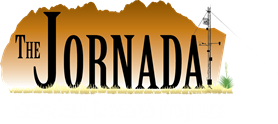| Title | Defining thresholds for wind erosion in desert rangeland STMs |
| Publication Type | Conference Proceedings |
| Year of Publication | 2020 |
| Authors | Webb N, Edwards B, Burke R, McCord S, Van Zee J, Courtright E, Cooper B |
| Conference Name | Society for Rangeland Meetings |
| Volume | Session 9 |
| Date Published | 02/16/2020 |
| Conference Location | Denver, CO |
| ARIS Log Number | 372820 |
| Keywords | desert rangeland STMs, thresholds, wind erosion |
| Abstract | Within the US, conventional understanding has been that most erosion is occurring in the Great Plains, but our knowledge about the extent and severity of rangeland wind erosion has been limited by monitoring and modeling technologies. Data from air quality monitoring programs like IMPROVE show there was a 75% increase in spingtime fine dust concentrations between 2000 and 2014 across the western states, but we still have a limited understanding of where, when and how much erosion is occurring. Importantly, few tools are available to help managers assess why wind erosion is occurring in responses to land use and management. This information is needed to identify appropriate conservation practices. As a consequence, wind erosion isn't typically considered in assessments of land resource condition despite its importance for plant community dynamics, agroecosystem resilience, regional air quality and climate. To address this problem we developed an Aeolian EROsion (AERO) model designed to run on standardized soil and vegetation monitoring datasets that are collected across the west. AERO is a physically-based model that requires inputs of surface soil texture, bare soil fraction, canopy gap size distribution, average canopy height and time-series or probability distribution of wind speeds for a plot location. By leveraging large standardized monitoring datasets, like those collected by the NRCS NRI and BLM AIM programs, AERO can be used to develop an understanding of potential sediment transport rates and dust emissions across rangelands as influenced by soil properties and the kinds, amounts, proportions and structure of different vegetation species. From AERO applications, we are developing approaches based on the Ecological Land Resource Hierarchy to understand the range of potential wind erosion for different land units at different spatial scales. Our work is then exploring approaches to establish benchmarks based on structural and functional thresholds of concern that enable managers to evaluate how wind erosion responds to changes in the kinds, amounts and proportions of vegetation within ecological sites. By using AERO to integrate the indicators of vegetation structure, the model can also be used to identify functional thresholds for wind erosion and assess whether these thresholds can be generalized across ecological sites and states to inform management at broader spatial scales. |


